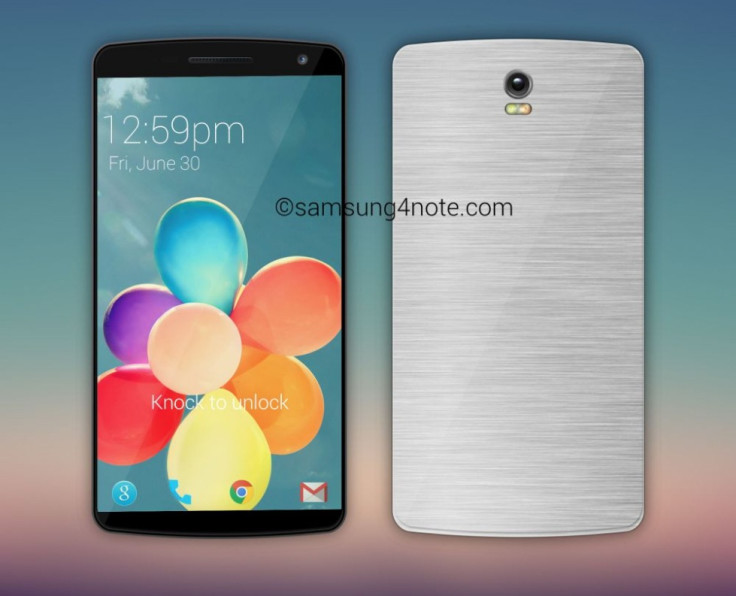Samsung Galaxy Note 4 to be First Smartphone with Ultraviolet Sensor: How it Works

Samsung's new Galaxy Note 4 will be the first smartphone to incorporate an ultraviolet sensor, suggests a new disclosure.
Last month, it was rumoured that Samsung would be using a UV sensor in the Galaxy Note 4. The UV sensor is said to be capable of tracking UV rays every 500 milliseconds and enable better auto brightness while the phone is outdoors. Other than these details there was not much information about the function of the UV sensor.
Now Sammobile has received exclusive information about the UV sensor feature and its functions on the new Note. According to the latest revelation, Samsung's next Note will be the world's first smartphone to have a UV sensor, which will be incorporated within the S Health app.
The UV sensor will be capable of measuring the sun's ultraviolet radiation and thereby preventing Galaxy Note 4 users from damaging their skin, ageing and increasing the risk of skin cancer. It does this by recommending guidance based on the current UV index level at a particular place and time.
In order to measure the UV radiation, users need to have the back of the device's sensor at an elevation angle of more than 60 degrees towards the sun.
UV Index
There are five UV index levels such as Low, Moderate, High, Very High and Extreme. The Note 4 will offer different preventive measures based on the sun's UV radiation level.
Low (UV Index 0-2):
The low UV index reading 0-2 signifies low danger from the UV rays.
Under the Low UV rays, wear sunglasses on bright days, cover up and use a broad spectrum SPF 30+ sunscreen, check for bright surfaces like sand, water and snow which reflect UV and increase exposure.
Moderate (UV Index 3-5):
The index level reading 3-5 means moderate risk with unprotected sun exposure. Stay in shade in the hot sun and if outdoors, wear protective clothing, a wide-brimmed hat and sunglasses. Besides, apply a broad spectrum SPF 30+ sunscreen every two hours, even on cloudy days and after swimming or when you're sweating.
High (UV Index 6-7):
This UV index reading suggests high risk from sun exposure and protection against skin and eye is also needed. Reduce time in the sun between 10 am to 4 pm. When outdoors, wear protective clothing, wide-brimmed hat and UV-blocking sunglasses and apply SPF 30+ sunscreen every two hours, even on cloudy days and after swimming or sweating.
Very high (UV Index 8-10):
Take extra protection for skin and eyes as the UV index level has high risk due to sun exposure. However, the preventive measures are the same as the UV Index 6-7.
Extreme (UV Index 11+):
When the UV index level is more than 11, take all precautions for skin and eyes, and all aforementioned guidelines.
Additionally, Samsung will include the following true and false statements on sun protection in the app.
True
A tan results from your body defending itself against further damage from UV radiation
A dark tan on white skin offers only limited protection equivalent to an SPF of about 4
Up to 80% of solar UV radiation can penetrate a light cloud cover. Haze in the atmosphere can even increase UV radiation exposure
Water offers only minimal protection from UV radiation, and reflection from water can enhance your UV radiation exposure
UV radiation is generally lower during the winter months, but snow reflection can double your overall exposure, especially at high altitude. Pay particular attention in early spring when temperatures are low but sun's rays are unexpectedly strong
Sunscreens should not be used to increase sun exposure time but to increase protection during unavoidable exposure. The protection they afford depends critically on their correct application
UV radiation exposure is cumulative during the day
Sunburn is caused by UV radiation which cannot be felt. The heating effect is caused by the sun's infrared radiation and not by UV radiation
False
A suntan is healthy
A tan protects you from the sun
You can't get sunburnt on a cloudy day
You can't get sunburnt while in the water
UV radiation during the winter is not dangerous
Sunscreens protect me so I can sunbathe much longer
If you take regular breaks during sunbathing you won't get sunburnt
If you don't feel the hot rays of the sun you won't get sunburnt
Apart from the UV sensor, the Galaxy Note 4 will also have all the health and fitness features introduced in Galaxy S5 like the heart-rate sensor.
© Copyright IBTimes 2025. All rights reserved.





















